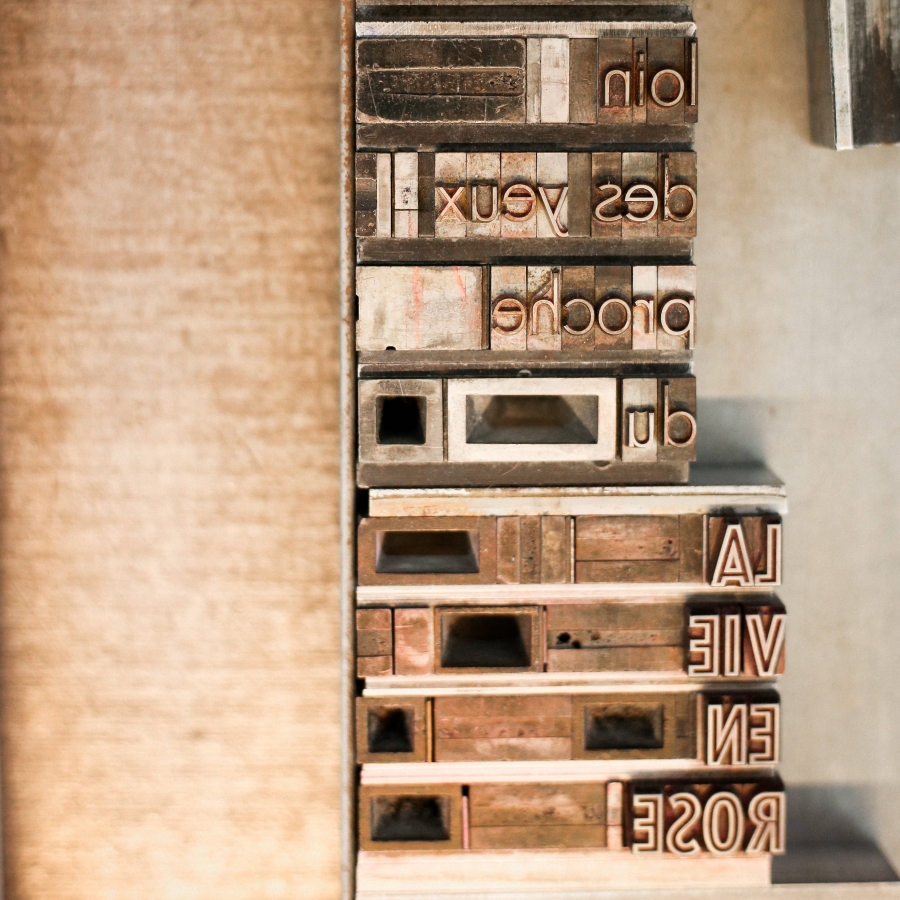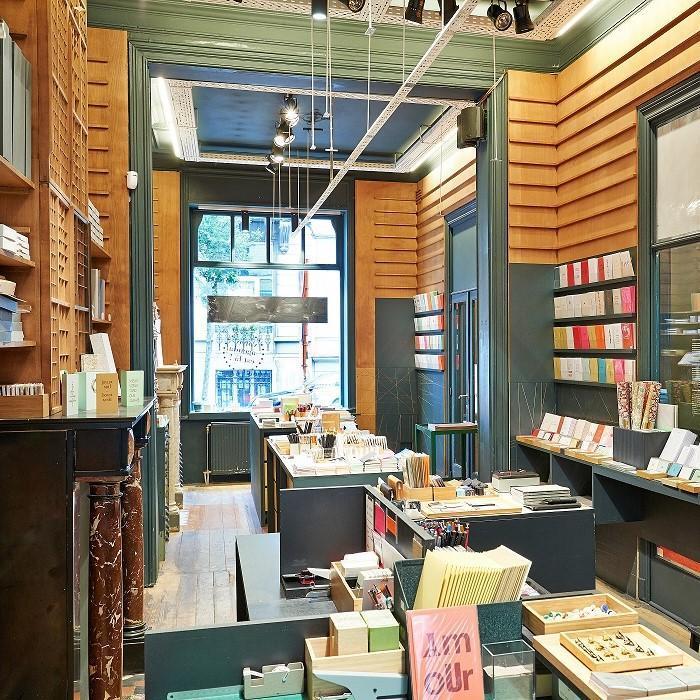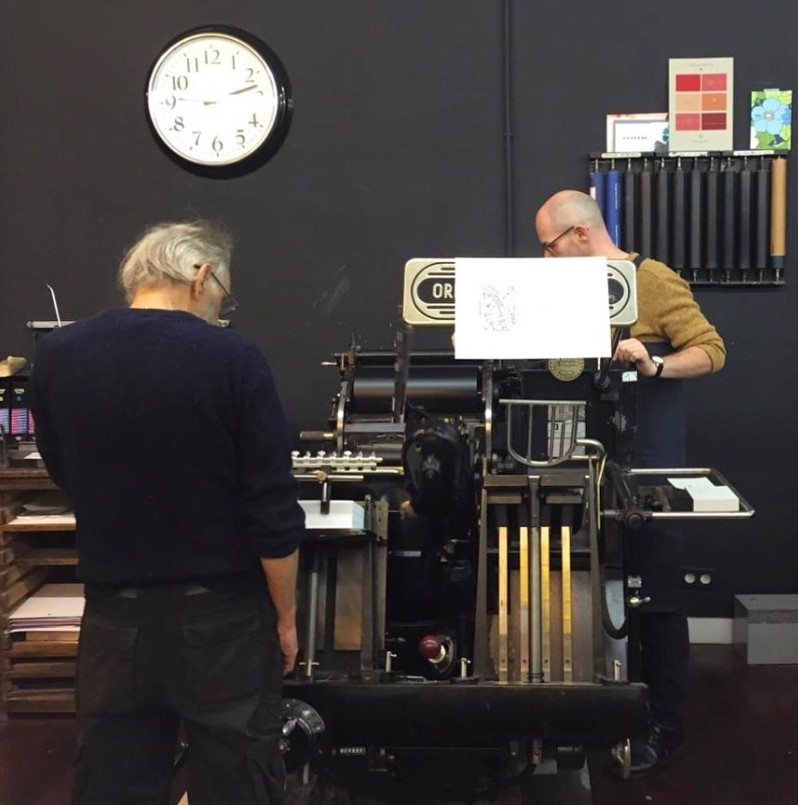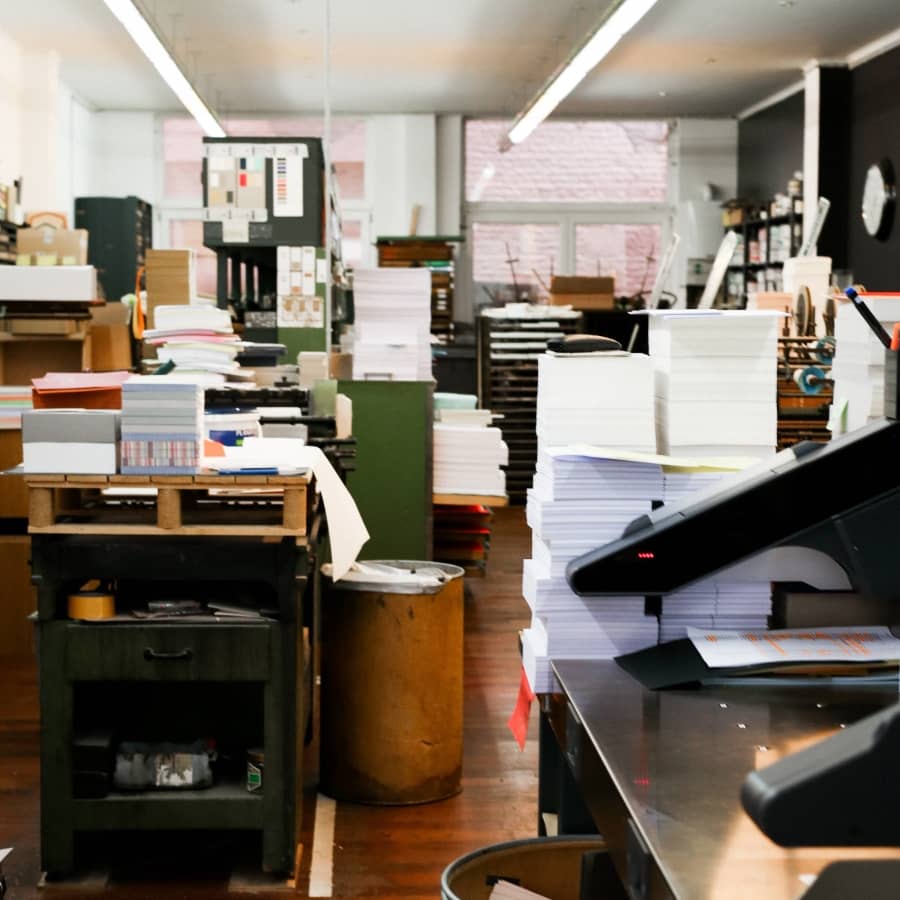In a time dominated by digital technology, some choose to preserve traditions. Cédric, founder of le typographe in Brussels, breathes new life into an ancestral art: typography. Between vintage typographic presses, the smell of ink and exceptional papers, the workshop is a living place where each creation tells a story.
Meeting with an enthusiast who combines memory and creativity.
Cedric, what is a typographer?
It’s a job, but it’s also a small bark beetle! The entomologists who discovered it gave it this name because it digs galleries under the bark of spruce trees that look like writing.
But at the beginning, typography was a traditional printing job where each letter was a movable lead character, repositionable and reusable. It was Gutenberg who invented this technique. Printing has existed since the dawn of time. The first person who put his hand in the earth and then pressed it on a rock face was printing!
What was your first contact with typography?
I don’t have any training in printing, but I fell in love with this craft when I was studying at the Beaux-Arts in Besançon. There was a typographer, Pierre Voisin, who lived in the basement with his typography machines and his lead letters. He shared his knowledge and know-how with me. I really liked the “Lego” aspect, because you have to assemble the letters to form a whole. I also really like the serial and repetitive nature of the exercise.


How did you decide to make typography your profession?
It came to me. I was doing a post-graduate degree in drawing at the Royal Academy of Brussels when the director of the Besançon School of Fine Arts asked me to come and collect all the lead characters that I had stored in the basement of the school, because they were doing some work. At that time, a printer in Brussels had a typography press to give away. It was the right time!
le typographe then settled in Américaine street?
Initially, I set up in the Brugmann district, in a workshop that had the advantage of having a door large enough to accommodate the typography press! But after a year, I began to feel cramped because I had accumulated a lot of lead characters, and recovered other machines from printing houses that were changing technology. I then found a suitable location, Américaine street, a place that was originally a printing house and which has a shop area and a workshop. You enter through a beautiful carriage entrance.
Even today, you continue to work on these same vintage and manual typography presses?
Absolutely, they are the heart of le typographe. They weigh 800 kilos. Made of cast iron, practically indestructible! Very mechanical. Their sound is very beautiful. They are as if inhabited by a pulsation.
Also read : Typography presses: le typograhe’s beating heart
In the digital age, why did you choose craftsmanship?
I wanted to save this heritage. It is a niche choice, which offers great freedom despite a very precise framework, linked to the typography technique. For example, it is not possible to print photos. I chose to stay within this framework and develop le typographe’s universe by taking into account the constraints and bringing creativity to it.

How le typographe’s creativity expresses?
It is expressed through papers, colors, designs, products that reflect our times. My first source of inspiration is the living: a plant, an encounter, a landscape… what surrounds me in general. For example, one day I red a graffiti on a bench at the Aix-en-Provence train station “Good girls go to heaven, others do what they want”. I liked it, so I used it in a card. The accident is also interesting. For Valentine’s Day, we had planned to print a mouth on a card. But when printing, during the second ink pass, the sheet moved. The result was 2 mouths one on top of the other, slightly offset… We kept it like that! You have to keep an open mind and feel things.
To consult… Folded card 2 mouths
Why choose to write a card or use a notebook rather than send an email or a text message?
I deeply believe that both have their place. Writing on paper has a strong emotional value. Receiving a letter or holding a notebook in your hands provides a joy that digital cannot replace. Paper engages our thoughts differently: it fixes ideas. And it is also a duty of memory! All the text processing softwares that we use today was developed based on the measurements and basics of typography. Letter sizes and font styles were originally created in lead for typography and then transcribed into binary language for computing.
le typographe is a real living workshop. How important is this aspect to you?
The workshop is not a frozen museum. It is a place where the memory of the profession continues to evolve. We are constantly testing new ideas: small print runs, sometimes 50 or 100 copies, to see what pleases. This flexibility is our strength. Feedback from customers and the team is precious: it is a real dialogue between us who create the objects and those who receive them.
How is the manufacturing process of typography carried out?
It all starts with paper, an essential raw material that has undergone significant adaptations in recent decades to meet ecological constraints. We collaborate with european and japanese factories that promote artisanal and ancestral techniques. Once the paper is received, it is cut, engraved with brass or polymer molds, then printed on our manual presses. Each product is unique, the result of many artisanal steps: up to 30 steps for some notebooks, from the choice of paper to the engraving of the molds.


What are your bestseller products?
We offer notebooks, notepads, diaries and cards that are entirely handmade. Among our most popular creations, the mini heart pad is emblematic. It has been so successful that our customers ask us for it as soon as it is out of stock.
To consult: Mini notepad heart
Another concrete example of the usefulness of paper is the diary. While all our electronic diaries can be synchronized, we have never sold so many paper diaries. There is this need to touch the paper, to write down appointments, to take notes, to fix thoughts.
What roles do the team members play in this process?
We are 12 working at le typographe. Each person brings their passion and know-how. Some work full-time, others part-time. This mix of experiences enriches the workshop. For example, Nathalie, who has been with us for 16 years, has an extraordinary ability to transform my ideas into concrete achievements. We operate as a small structure where collaboration is essential.
Conclusion
The Cédric interview, founder of le typographe, takes us to the heart of a universe where craftsmanship, passion and innovation coexist. In the digital age, this living workshop embodies creative resistance, truly valuing the unique emotion of paper and the transmission of ancestral know-how in typography that still has beautiful pages to write.
Interview based on the Ysaline Nicol’s podcast: J’aime quand vous souriez,

